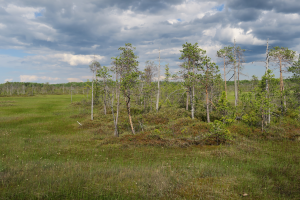Dr hab. Katarzyna Marcisz and prof. dr hab. Mariusz Lamentowicz from Climate Change Ecology Research Unit co-authored a new transfer function for Asian peatlands. The paper was published in Quaternary Science Reviews: Qin, Y., Li, H., Mazei, Y., Kurina, I., Swindles, G.T., Bobrov, A., Tsyganov, A.N., Gu, Y., Huang, X., Xue, J., Lamentowicz, M., Marcisz, K., Roland, T., Payne, R.J., Mitchell, E.A.D., Xie, S., 2021. Developing a continental-scale testate amoeba hydrological transfer function for Asian peatlands. Quaternary Science Reviews 258, 106868.
The article uses microorganisms commonly and abundantly found in peatlands - testate amoebae - to create the first continental-wide transfer function for peatlands in Asia.
Testate amoebae are single-celled microorganisms whose occurrence in peatlands is related to hydrological conditions. When a peatland is wet, its area is populated by specific species of testate amoebae adapted to such conditions. When the water level decreases, for example due to drought, other species of testate amoebae dominate the bog's surface. Shells of amoebae can be preserved in the peat for up to several thousand years what makes it possible to reconstruct the past hydrological changes that occurred at a given site.
In a publication by Qin et al. 2021, the authors collected data on the ecological preferences of testate amoebae from peatlands in Asia, including data scientists from AMU collected from the Mukhrino peatland in western Siberia (Photo 1. Author: Prof. Mariusz Lamentowicz). Based on these data, they created a mathematical model for reconstructing hydrological changes - a training set and a transfer function. This tool will be useful for determining the past hydrological changes of Asia's peatlands in future studies.
